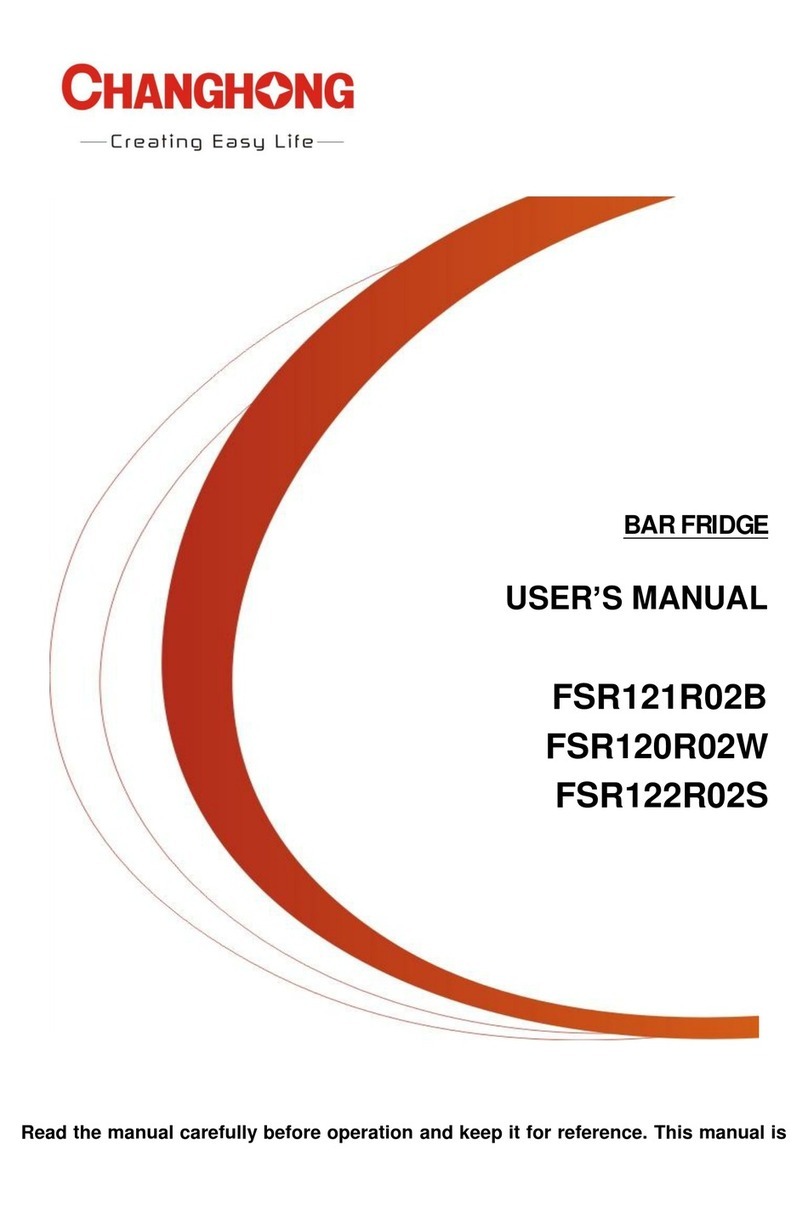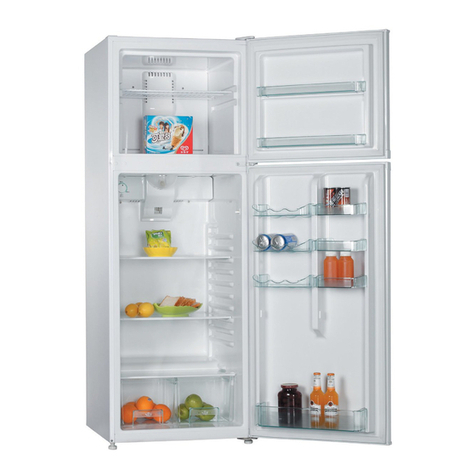
7
IN USE
1. The appliance might not operate consistently (possibility of defrosting of
contents or temperature becoming too warm in the frozen food compartment)
when sited for an extended period of time below the cold end of the range of
temperatures for which the refrigerating appliance is designed
2. The fact that the climate class is T, and the room temperature of between
16℃and 43℃.
3. The fact that the internal temperatures could be affected by such factors
as the location of the refrigerating appliance, ambient temperature and the
frequency of door opening, and, if appropriate, a warning that the setting of any
temperature control device might have to be varied to allow for these factors
4. The fact that effervescent drinks should not be stored in food freezer
compartments or cabinets or in low-temperature compartments or cabinets, and
that some products such as water ices should not be consumed too cold
5. The need to not exceed the storage time(s) recommended by the food
manufacturers for any kind of food
6. The fact that a rise in temperature of the frozen food during manual
defrosting, maintenance or cleaning could shorten the storage life
7. It is better wrapping the frozen food in several layers of the glass shelves.
8. The care required with regard to frozen food in storage in the event of an
extended non-running of the refrigerating appliance (interruption of power supply
or failure of the refrigerating system)
9. The door to the evaporator clearance can be used to store food.
Tips for keeping food perfect in the Fridge
Take extra care with meat and fish
Cooked meats should always be stored on a shelf above raw meats to avoid
bacterial transfer. Keep raw meats on a plate which is large enough to collect
juices and cover it with cling film or foil.
Leave space around food
This allows cold air to circulate around the Fridge, ensuring all parts of the Fridge
are kept cool.
Wrap up food!
To prevent transfer of flavors and drying out, food should be separately packed
or covered. Fruit and vegetables need not be wrapped.
Pre-cooked food should be cooled properly




































